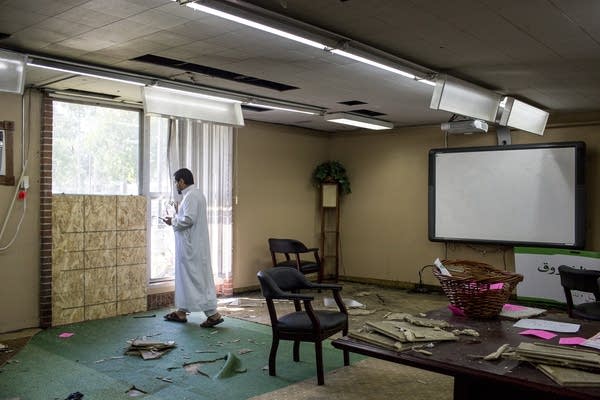Mosque attacker testifies against alleged ringleader of 2017 firebombing

Asad Zaman stands at the site of the bombing in the Dar Al-Farooq Islamic Center in Bloomington. An Illinois man is on trial in St. Paul for planning the bombing.
Courtney Pedroza | Star Tribune via AP 2017
Go Deeper.
Create an account or log in to save stories.
Like this?
Thanks for liking this story! We have added it to a list of your favorite stories.


